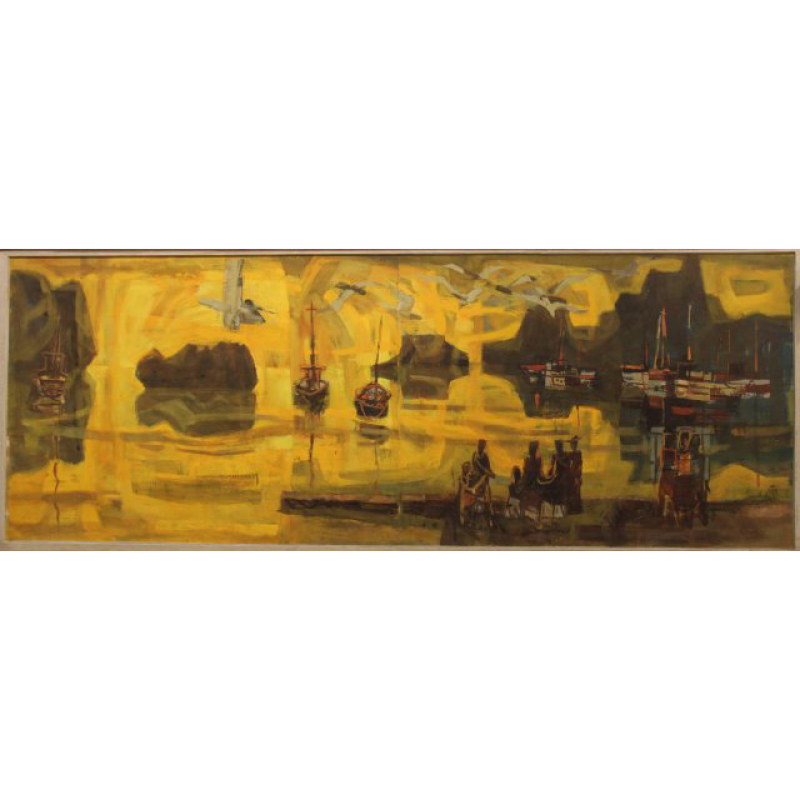Phil Paradise was born in Oregon, and raised in Bakersfield, California.
After graduating from high school, he studied art with F. Tolles Chamberlin, Rico Lebrun and Leon Droll. In the 1920s, he studied at the Chouinard Art Institute in Los Angeles and worked for Paramount Studios. He taught art at Chouinard and Scripps College. He worked in a regional style in the late 1920s and 1930s. In the late 1930s, he actively sold his paintings in New York and Los Angeles galleries. He traveled and lived in Mexico, Central America and Caribbean countries. After the mid 1940s his paintings changed in style and subject matter because he drew most of his subject matter from these areas.
During the 1960s, he set up a print workshop in the central California town of Cambria and began producing limited edition serigraph prints. Paradise was known for his ability to sketch from memory of his travels and produced a book of hundreds of India ink sketches from which he painted for years. He created metal sculpture, pottery and ceramic murals which he sold out of his studio-home in Cambria.
Phil Dike was a member of the National Academy of Design, American Watercolor Society, and California Watercolor Society (President, 1939).
